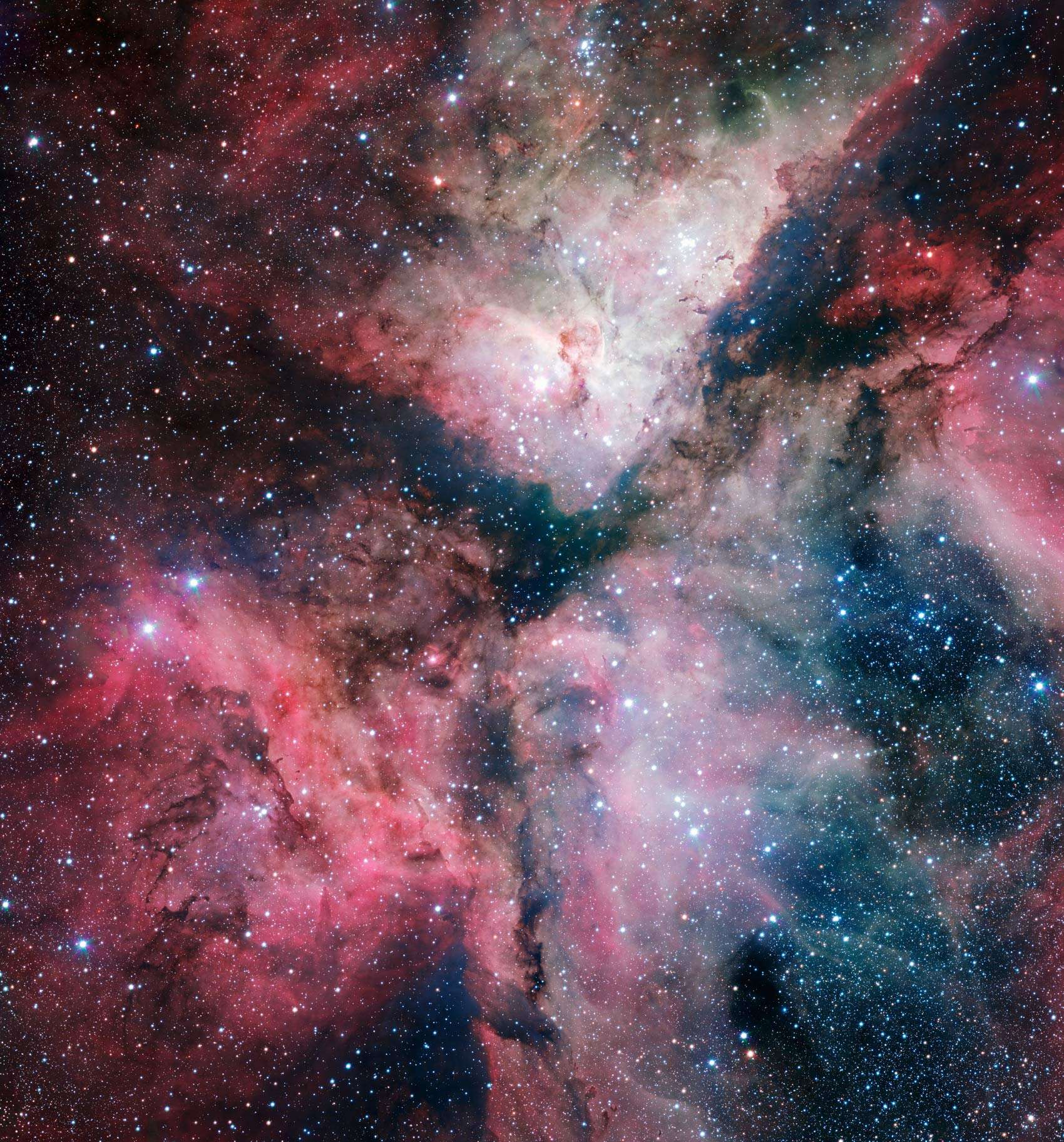Create a free profile to get unlimited access to exclusive videos, sweepstakes, and more!
Careening Into the Carina Nebula

Howâs your jaw today? Relaxed? Clenched? Well, either way, let it slam into the floor by feasting your eyes and brain on this stunning picture of the Carina Nebula, a nearby star-forming gas cloud:
Holy hot hydrogen gas! I had to shrink the image to fit the blog, but if you click it youâll see the 1300 x 1400 pixel version. There's a 3700 x 4000 pixel one as well if you prefer your nebulae in moderation ⦠and if you really want to punish your Internet provider, you can try to swallow down the ginormous 17383 x 18656 pixel image, which weighs in at a whopping 350 megabytes!
And even then that isnât truly full resolution. This picture was taken with the newly inaugurated VLT Survey Telescope, or VST, a 2.6-meter telescope in Chile. Itâs equipped with a detector called OMEGACam, which isâget thisâa 268 megapixel camera.
The camera is so big because itâs designed to survey the sky, taking pictures of large swaths of the heavens quickly and in fine detail. And itâll be busy: Itâs expected to generate about 30 terabytes of data per year. Thatâs 30 million megabytes of data.
The VST and OMEGACam have been operating for a few months to test them out and are now about to go into production run. I canât think of a better target than the Carina Nebula for the first official photo. This sprawling gas cloud is about 7,500 light-years away, relatively close on a galactic scale. Itâs a monster, well over 100 light-years across, and churning out vast numbers of stars.
Some of these stars are among the largest and most violent known. My favorite is Eta Carinae, which you can see in the above picture in the upper wedge-shaped region, just to the left of center. Eta Car is a star that almost defies human comprehension: a binary star where the more massive of the two is possibly more than 100 times the mass of the sun, at the very upper limit of how massive and luminous a star can be without tearing itself apart. In 1843 it suffered an epic paroxysm that launched two huge bubbles of gas into space, each as massive as the sun (seen inset here in a Hubble Space Telescope shot). The furious energy of the blast was second only to a supernova and briefly made Eta Car the second brightest star in the night sky, even at its distance of 75,000 trillion kilometers (45,000 trillion miles)! One day it'll truly blow its top, exploding as a supernova. Even at that distance, it may brighten so much it'll rival Venus in the night sky.
And thatâs just one star of thousands the Carina Nebula is churning out. This gas cloud is so big and bright, I can easily imagine alien astronomers in distant galaxies noting it when they observe the Milky Way; it must be one of the outstanding features of our galaxy, even seen from millions of light-years away.
The VST+OMEGACam combination will be an incredibly powerful tool for mapping the sky. This image of Carina is just a taste of whatâs to come as the telescope sweeps the night sky: We can expect to see nebulae, stars, galaxies, nearby asteroids, and more, all in amazing detail. And you can be sure Iâll post them here when they come out. These will be far more than just pretty pictures; theyâll be a treasure trove of science that will lead to a better understanding of the gorgeous universe in which we live.


























